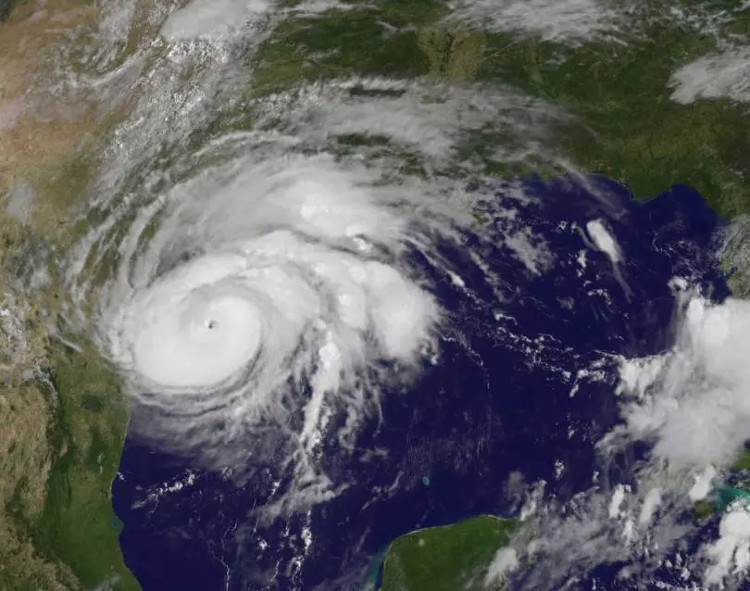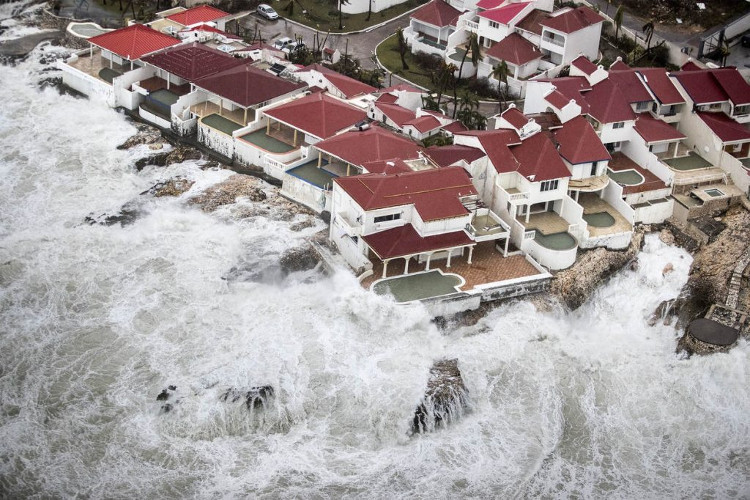What is a storm? How storms form and why do storms occur?
This year, the world appears many extremely large, very strong storms, causing serious consequences for the places they go through. So how does the storm form? Why is there a storm? The following article will answer for you.
What is a storm?
Storm is a turbulent state of the atmosphere and is a type of extreme weather.
Storm is a tropical cyclone, which is structured by a hot and humid gas block with very strong currents around the storm's eye, creating a cloudy and swirling system into the center of the storm. This swirling wind region is hundreds of kilometers in diameter and forms in the northern hemisphere's tropical waters.

Harvey storm from the satellite.
How did storms form?
Hurricanes can only form when there are three conditions: heat, moisture and momentum to create vortex.
The weatherer Erik palmen has found that the storm can only form at sea in latitudes of 5-20 degrees latitude on both sides of the equator with high temperatures (from 26 to 27 degrees Celsius or more) to ensure sufficient supply Huge steam evaporates strongly from the sea surface to provide agglomeration for storms to form and large coriolis forces to create vortices, creating favorable conditions for storms to form.
The storm cannot form in the 0 - 5 degree latitude on the two sides of the equator because there is too little force, not enough to create vortex. The air mass in the whirlpool is about 200 km across, about 1000 km long, about 10 - 12 km from the ground.
Why is there a storm?
Typhoons form in the tropics because this natural phenomenon requires a very hot stream of water, at least 26 degrees at least 50 meters below the water.
Hot water creates strong evaporation, but evaporation is the fuel of storms. This very moist mass will rise to 15 kilometers. There, the gas will become cold, condensed and make unstable storm clouds become larger.
When the cold air gets down, it fills in hot, moist air again. And it was sucked at a very high speed into the air duct soaring. The reason for this phenomenon is because the pressure here is lower than other places. This explains why the cloud rolls around this chimney.

Irma storms across the island of Sint-Maarten.
Because the Earth turns, in the Northern Hemisphere is the opposite of the clock, while in the Southern Hemisphere is the same direction as the clock, so the storm always turns in the same direction.
The hotter the water, the higher the temperature of the engine and the wind accelerates. At this time, the storm strengthens. Its power sometimes reaches the equivalent of 5 nuclear bombs per second. But as soon as a cold water stream or land is encountered, storms decrease in intensity because of the lack of evaporation.
Why do storms occur mainly in summer and autumn?
The main time of operation in the year of storms and tropical depressions is in summer and autumn: From June to November (in the Northern Hemisphere) and December to March next year (in the Southern Hemisphere), storms most appear in the summer and autumn, because at this time there are all the most favorable conditions for the formation and development of storms : High seawater temperature (at least 26 o C or more) ), the tropical atmosphere is quite favorable for large-scale convection development and vortex movement.
- What happens if the wind stops blowing on Earth?
- The anger of Earth's mother
- This year, there will be about 15 storms from
- The cleaner the air, the more the number of storms increases
- Safety skills when storms occur
- Why consecutive storms occur?
- Why can't we defeat storms with atomic bombs?
- Snow and storms occur in some European countries
- Video: Fire storms make people impassive
- Three extremely rare tropical storms occur simultaneously on the Pacific Ocean
- Why is there a storm?
- El Nino changes may cause many storms to land
- Big storms appear in Central America and the Caribbean
 Is the magnetic North Pole shift dangerous to humanity?
Is the magnetic North Pole shift dangerous to humanity? Washington legalizes the recycling of human bodies into fertilizer
Washington legalizes the recycling of human bodies into fertilizer Lightning stone - the mysterious guest
Lightning stone - the mysterious guest Stunned by the mysterious sunset, strange appearance
Stunned by the mysterious sunset, strange appearance